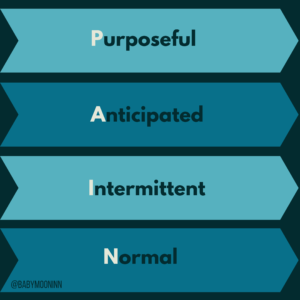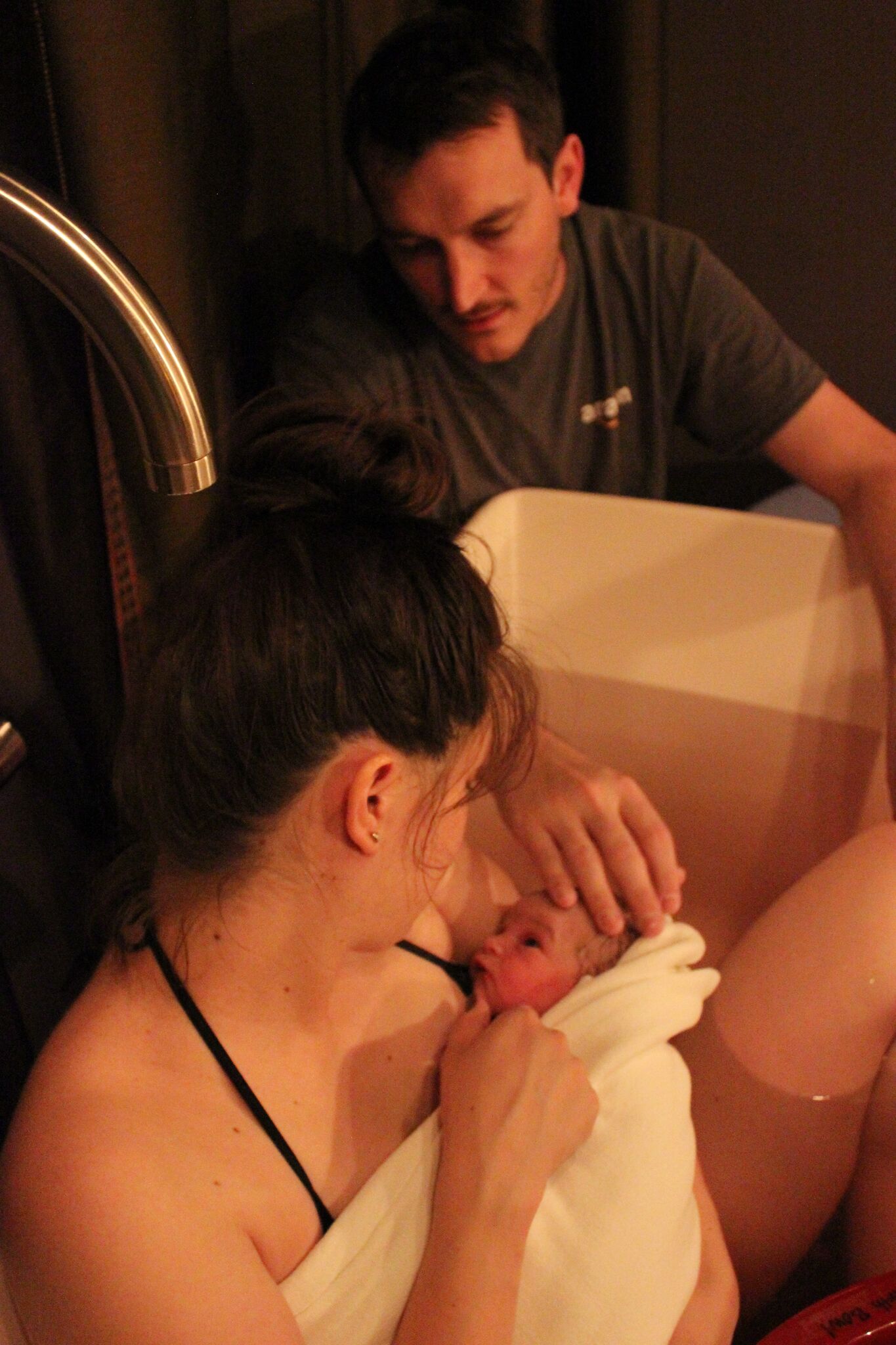
Five Tips for Managing Labor Pain
When preparing for a natural birth, it’s common to be concerned about the discomforts of labor. In a country where the majority of vaginal births include epidural pain relief, and articles imploring women to “just get the epidural” are widespread, planning an unmedicated birth may seem intimidating. But we promise it’s actually very achievable! Here are a few tips for managing a med-free labor.
Give birth in an environment designed to support natural birth. Labor is hard work (there’s a reason it’s called “labor!”). And yes, that hard work is accompanied by some pretty intense sensations. But having complete and total control over how you respond to those sensations is a game-changer. Provided you are healthy and low-risk, your place of birth and your birth team should provide total autonomy for you to eat, drink, move, and vocalize in whatever way feels best to you. Consider seeing midwives and giving birth at a freestanding birth center or at home.
Pack some comfort tools in your labor bag. Consider bringing a tennis ball, massage tools, rebozo, lip balm, reheatable rice sock, ice pack, wireless speaker, and essential oils to your birth. Practice using these things and have your birth partner brush up on his or her massage skills. Choose a birth location with unrestricted access to a shower and bathtub so you can take full advantage of the benefits of hydrotherapy. What brings you comfort and helps you relieve stress in your daily life? Apply these same philosophies to labor.
Take a class. Unfortunately physiologic birth is no longer the norm and therefore pregnant women don’t always have the benefit of generations of women before them and a circle of women around them sharing stories of normal birth. Soooo much of what is shared about birth is fear-based. Taking independent (i.e. offered outside of a hospital), comprehensive childbirth classes will not only teach you strategies to manage pain but also help you reframe your thinking to not see labor pain as scary or harmful. Which bring us to…
Use this acronym to shift your mindset and remove negative associations with the word “pain.”
Hire a doula. Every person should bring a doula to their birth, regardless of whether it’s natural or medicated, vaginal or surgical. But if you’re planning a natural birth, hiring a doula or having continuous labor support from someone other than your partner is a must. These magical birth fairies know all the best tricks to keep the laboring person and their partner as calm and comfortable as possible. A doula knows exactly where to apply counterpressure to relieve that back labor, how to breathe with you to release tension, and exactly what to say if you’re feeling overwhelmed by labor. And if your plans for birth need to change, a doula can help you navigate any unexpected turns your labor might take.
We asked experienced mamas what helped them manage labor sensations – here’s what they had to say:
Instead of anticipating the next contraction, anticipating the break in between contractions helped me get through. The break is coming, my rest is coming. – Aja R.
I knew the contractions were doing the hard work to open my cervix, so every time I had one, I literally visualized my cervix opening as a result and did my best to relax and think “open…open…open” until it was over. Not fighting those contractions, but instead working WITH them was key. – Tamara K.
Trusting that my body was in complete control of the labor and delivery process made it all bearable in the coolest way possible, but reminding myself that my mom, who is my biggest role model in life, and all my other female ancestors have done it too made me feel like a warrior. I can’t leave out my loving husband who was my rock during it all. – Michelle H.
With my third birth, I thought a lot about how the contraction was my body’s doing. It helped me view it less as pain…something we naturally fear. It is so different than pain being inflicted or felt in a negative way. There was nothing to fear because it was my body’s natural response. I remember saying in my head that “my body (the contractions) are powerful and I am strong.” – Michelle R.
The phrase “fudgy monkey balls” got me through all those heinous contractions, as did being on all fours in a hot shower, counting backward from 100, and sitting backwards on the toilet. I wish I could explain the fudgy monkey balls….but it literally just came out of my mouth and it was the only thing I could say! – Emily B.
It really helped me through being able to change positions. The most helpful thing for contraction pain was being able to sit on a yoga ball in the shower and using the rabozo(sp?) to apply counter pressure on my hips. That helped tremendously! – Megan E.

Diana Petersen M.Ed., LCCE
Director of Education, Babymoon Inn
Diana Petersen received her journalism degree at the University of Arizona and her Master’s degree in education at Northern Arizona University.


